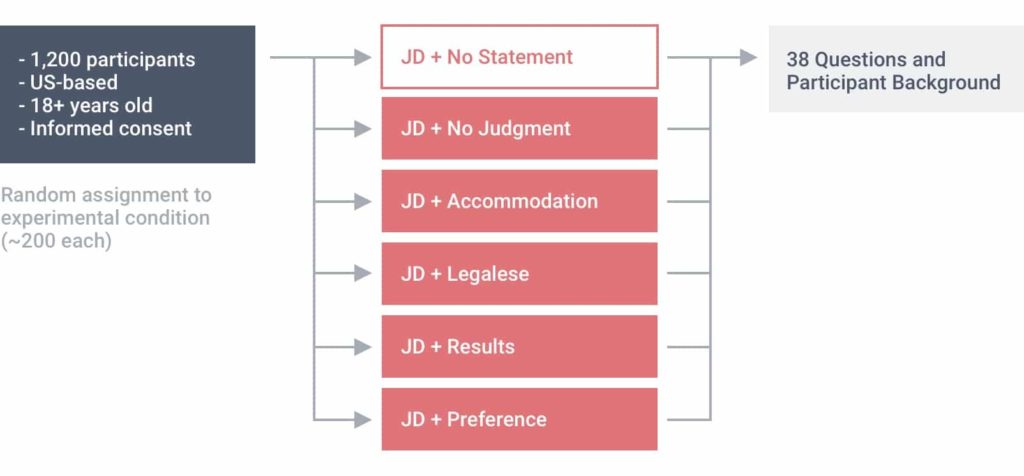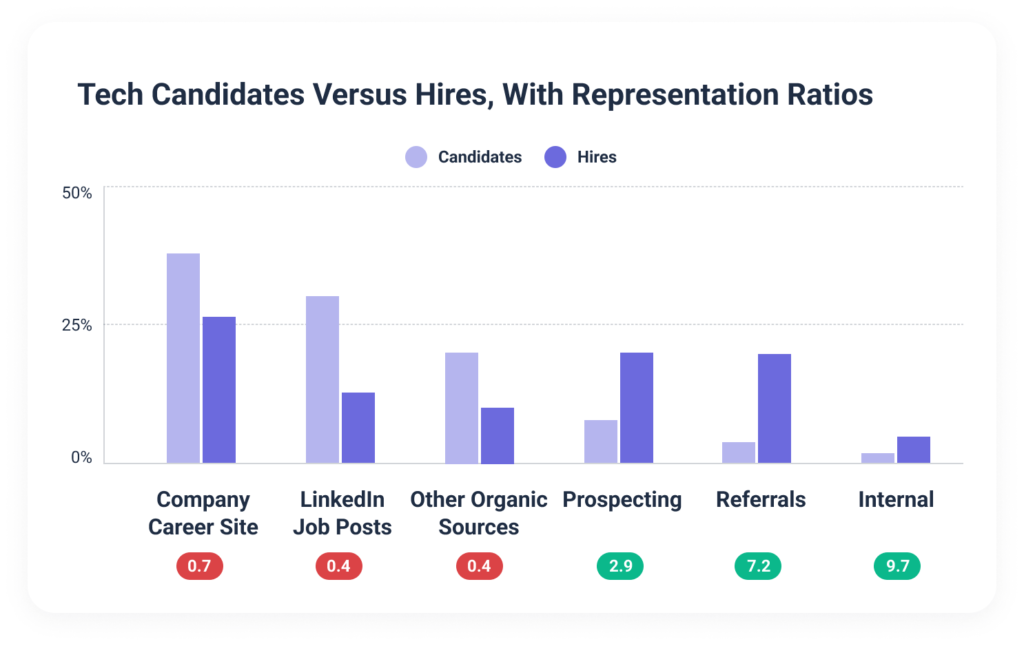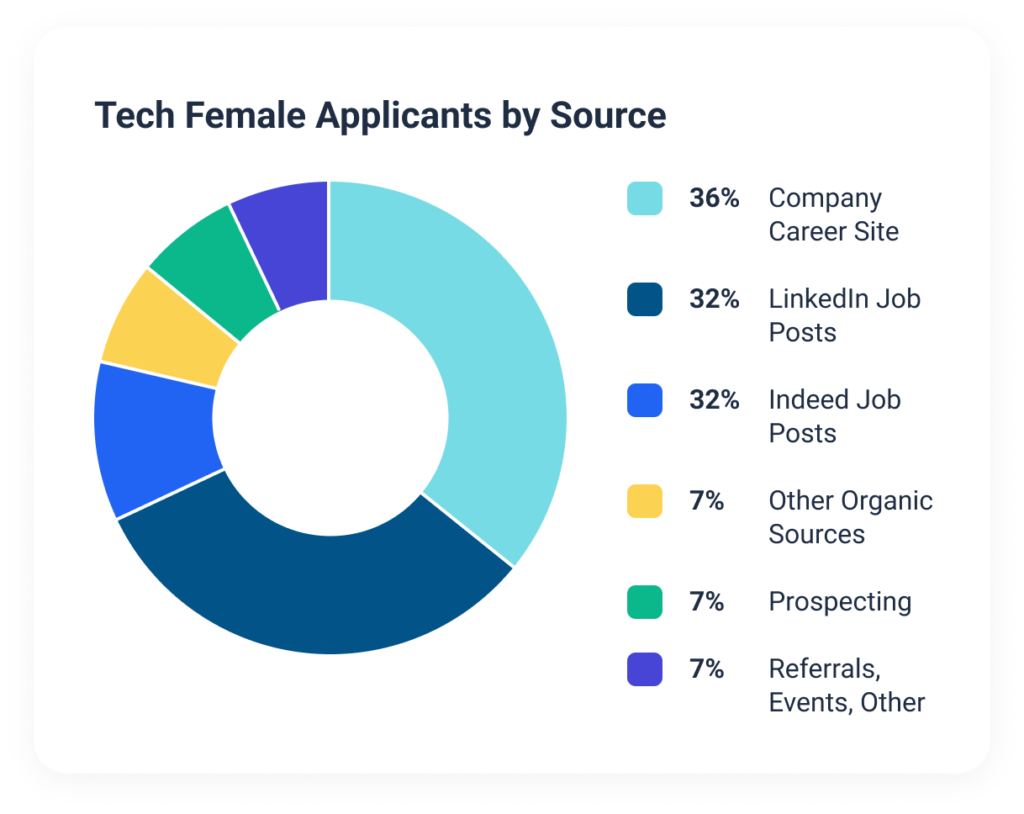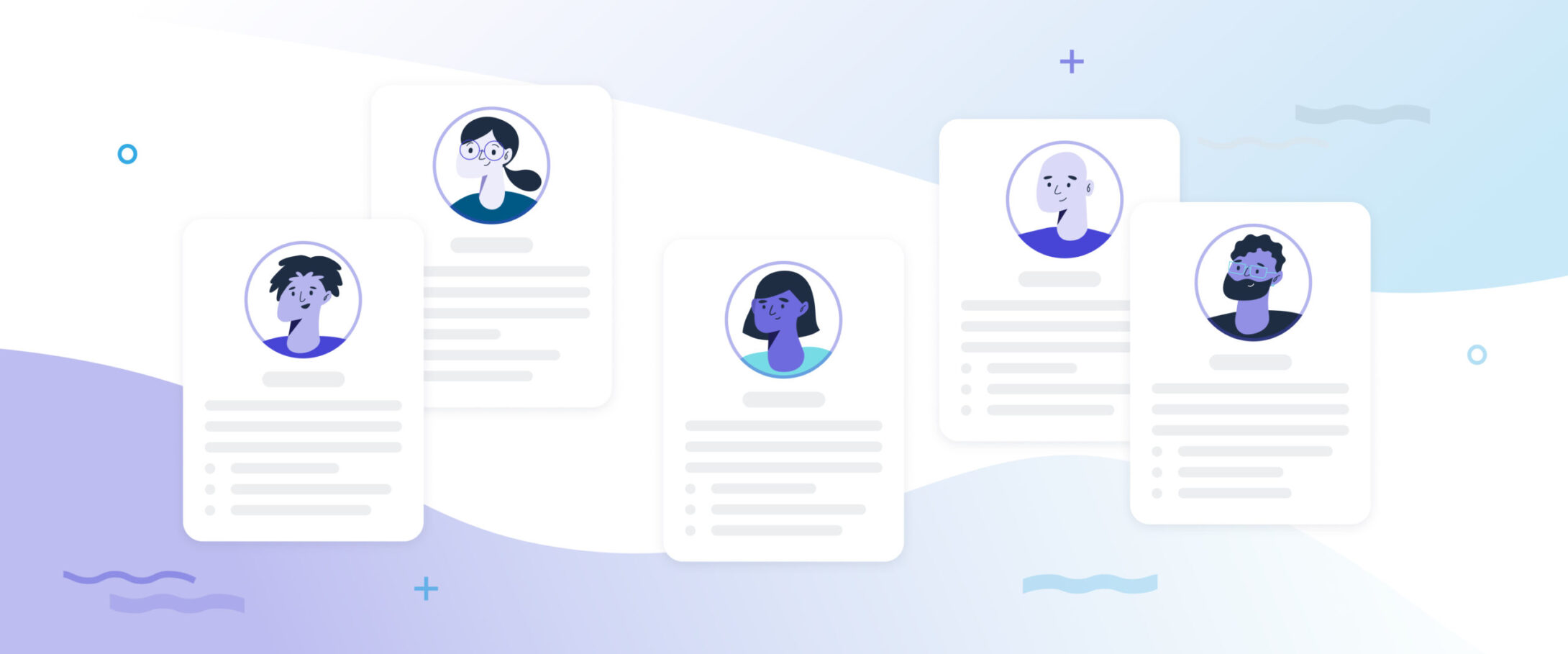It’s true that all job seekers are equal under the law in the United States and many other countries. But it’s also true that not all job seekers have the same access and opportunity under the traditional hiring model. Here’s an overview of diversity, equity, and inclusion tactics you can use to provide a more equitable hiring process.
Diversity, equity, inclusion, and belonging are four distinct yet closely related concepts. Diversity refers to the demographic makeup of your workforce. Equity is the level of access to opportunity. Inclusion refers to how welcoming your company is for employees of all backgrounds. And belonging is a feeling of comfort.
Diversity, equity, inclusion, and belonging
A diverse workforce is one that includes members from a number of different demographics. Those demographics include unique aspects such as gender, ethnicity, age, national origin, socioeconomic background, and religion. They can also include intersectionalities of demographics (e.g., a middle-aged Black woman).
An equitable recruiting process is one where everyone has access to opportunity. Listing on a common job board like Indeed, for example, provides all candidates with internet access an equal opportunity to apply. Referral programs where potential candidates need to know someone at the company, by contrast, restrict access.
Inclusion is an approach to workplace culture where people of all backgrounds are both welcome and set up to succeed. If employees feel opportunities are limited (i.e., no chance for promotion), they’ll eventually leave and diversity efforts will backslide. While diversity gets most of the press, inclusion is really the heart of any diversity, equity, inclusion, and belonging initiative.
Belonging is the feeling someone from an underrepresented group may have in an inclusive workplace. (That’s the hope, anyway.) Not only do their coworkers accept them, they embrace them just as they are.
To sum up, diversity and belonging are end goals, equity how you get there, and inclusion the foundation of it all. Again, diversity, equity, inclusion, and belonging are closely related (yet distinct) concepts.
Pledging your commitment to diversity, equity, and inclusion
Regardless of form, a company diversity statement does have an impact on how job seekers view the job and your company. In a study, the Datapeople R&D team found that DEI statements on job postings (i.e., equal opportunity employer statements in the United States) impact the perceived inclusiveness of employers.
We enlisted about 1,200 participants from a wide spectrum of intersectionalities and showed them each a single job description. Each participant’s job description had either no diversity statement at all or one of five different statements that we wrote specifically for the survey. (We were also curious about how job seekers react to different types of diversity statements.)

We found that including a company diversity statement on job posts makes your company appear more inclusive to job seekers. (Regardless of what type of diversity statement you include, actually.) It’s a pledge to diversity and a signal to job seekers that your company has a welcoming environment.
The graph below shows (in gray) that all five statements increased perceptions of inclusiveness. (Although not all of them improved perceptions of process fairness or belonging.) The takeaway? A diversity statement – any diversity statement – increases perceived inclusiveness. (We love our customer Deliveroo’s diversity statement, which we dissected here.)

Addressing bias in hiring
Bias is a bit of a rabbit hole. Looking across the surface of a field, you may see a hole in the ground. But you don’t see the maze of tunnels under the surface, including beneath your own feet.
Sexism and racism are unconscious biases that everyone knows about, but there’s more to it than just gendered language. There’s also tokenism, ableism (bias against people with physical limitations), ageism, nationalism, elitism (mostly socioeconomic), and religion bias.
Addressing bias in hiring requires finding a lot of different tunnels. But finding tunnels isn’t easy, especially if you’re not a rabbit and don’t recognize the signs. (In other words, if you haven’t walked a mile in someone else’s shoes or done a lot of painstaking scientific research.) And it’s not a problem that an inclusive language guide can solve.
So, how can bias guidance help you identify bias in a job post that you don’t know is there? Any recruiter can recognize that a jack of all trades who knows how to man up is gendered language. But what about an energetic, aggressive worker and excellent communicator? Not so obvious, yet also known as a young, male, native speaker.
Even more subtle, what about degree from an Ivy League university? This sounds like an academic requirement, but it’s also a socioeconomic one. Because it can exclude anyone who can’t afford a prestigious university or get a full ride to one (which is most people, actually).
Writing inclusive job descriptions
Job descriptions are the most important piece of your hiring effort. Why? Because they’re often the first and only messaging that potential candidates see from your organization. It’s absolutely vital to your diversity, equity, and inclusion effort that you publish inclusive job descriptions.
By inadvertently including bias in job descriptions, you may accidentally deter potential candidates from historically underrepresented groups. Inclusive job descriptions use language and content that is proven to include, not exclude, all job seekers.
Ableism, for example, is a subtle bias that’s difficult for a lot of us to identify (think of the rabbit analogy). Requirements like ability to lift 30 pounds or thrive in an energetic environment seem innocuous. But someone in a wheelchair may not be able to lift 30 pounds, and someone who’s hard of hearing may not hear well in a noisy office.
The way to avoid ableism is to keep the requirements of the job to the bare essentials. Does an accountant really need to lift 30 pounds to perform the functions of their job? (A warehouse worker, sure, all the time.) And aren’t there reasonable accommodations you can make for someone who is hard of hearing in a noisy office?
Inclusive job descriptions incorporate unbiased language and content that’s important to job seekers. And they’re posted widely so all qualified job seekers can find and apply to them. If a job description lacks a diversity statement, for example, job seekers may assume diversity isn’t a priority. Inclusive job descriptions welcome all job seekers.
What makes an inclusive job description?
- A searchable, industry-standard title that job seekers can find and recognize.
- Clear roles, responsibilities, and requirements.
- Diversity statements, benefits, and perks.
- Clear, non-biased language that welcomes job seekers of all backgrounds.
- Visibility on common job boards.
Sourcing candidates through traditional methods
An important piece of the diversity, equity, and inclusion puzzle is sourcing. How you go about sourcing candidates determines who gets a shot at the job.
Hiring teams use a few different methods to source candidates. Active recruiter sourcing involves reaching out directly to candidates on LinkedIn and other sites. Diversity recruitment usually means a dedicated diversity recruiter on staff. And there’s also third-party sourcers and referral programs.
The problem with these methods is that they limit the candidate pool, put the onus on a single recruiter (diversity recruitment), or artificially inject diversity into the candidate pool. They’re also vulnerable to unconscious bias that can affect candidate sourcing (e.g., profile pictures on LinkedIn can influence whether someone gets an interview).
Sourcing candidates organically
Despite the popularity of diversity sourcing these days, inbound recruiting and organic sourcing yield the most democratically sourced, representative applicant pools.
Organic candidates are job seekers who apply on a careers page or common job board like LinkedIn or Indeed. Organic sourcing focuses on attracting these candidates with high-quality, inclusive job descriptions. (Inherently, organic sourcing puts more emphasis on the quality of your job post and how it performs on job boards. It’s the foundation of inclusive hiring.)
Organic sourcing invites everyone with a computer and internet access. Contrast that to sourcing and referral programs, which only invite a handful of job seekers. Referrals, in fact, are a good example of the inequity inherent in sourcing programs.
The Datapeople R&D team analyzed job listing data from over 10,000 companies between 2019 and 2021. Among many other recruiting trends, we found that the vast majority of applicants – 86% – come from organic sources. Yet organic applicants represent only half of all hires. Referral applicants are 9 times more likely to get hired than applicants from careers pages and 18 times more likely than applicants from LinkedIn.
(In the chart below, we use a representation ratio to establish bias towards or against certain candidate sources. A value of 1 suggests the number of hires is proportionate to the number of applicants. Meanwhile, a value of less than 1 suggests bias against that source. And a value of more than 1 suggests bias for that source. The higher the number, the greater the bias.)

But not only do most applicants come from organic sources, most female applicants – 85% – come from organic sources. That’s an important point. By ignoring organic sourcing, you’re effectively closing the door on women.

Employing diversity hacks
Another relatively recent recruiting method is the diversity hack. This tactic makes a well-intentioned yet clumsy attempt to bring candidates from underrepresented groups into your talent funnel.
The most well-known diversity hack is the Rooney Rule, which comes to us from the National Football League (although it’s now fairly common elsewhere). Despite most of the players in the NFL being Black, almost all of the coaches are white. The league addresses this obvious disparity by requiring teams to interview at least one minority when hiring a new head coach.
The Rooney Rule was one of the first recruiting diversity hacks to address inequity in hiring, but now organizations are putting their own spin on it. Facebook, for example, requires that recruiters pass on minority candidates to hiring managers for every position. HubSpot gives senior leaders budget flexibility to hire top minority directors even if they’re more expensive. And many companies use blind recruiting processes to mitigate unconscious bias.
The primary problem is that diversity hacks target the bottom of the talent funnel instead of the top. In fact, there’s no need to insert minority candidates at the bottom if you welcome them at the top. You’re just messing with your organic sourcing effort at that point.
But if you want to go down that road, there are Rooney Rule tips you can use to make it more equitable. You can aim it at the top of the talent funnel, apply it to all roles, and take it beyond ethnic minorities to other underrepresented groups.
Hiring for diversity, equity, and inclusion
No matter what industry you operate in, your hiring teams are undoubtedly focused on diversity, equity, and inclusion. It’s not a question of whether to invest in it at this point, just how to invest in it successfully.
We hope this article offers you a roadmap for identifying and addressing inequities. It may require looking at your tried-and-true hiring processes in new ways, but that’s kind of the point. Traditional hiring processes aren’t getting us to diversity, equity, and inclusion. It’s time for more fair, inclusive processes.
Need more tips for achieving hiring equity? Our free playbook, The Talent Acquisition Mega Guide to Equitable Hiring, suggests a dozen best practices for making your hiring process more fair (and efficient, too). From optimizing your job posts for inclusivity to exposing biases in your funnel through data, download now to learn the many ways you can systematically bake fairness into every step of your recruiting efforts.
